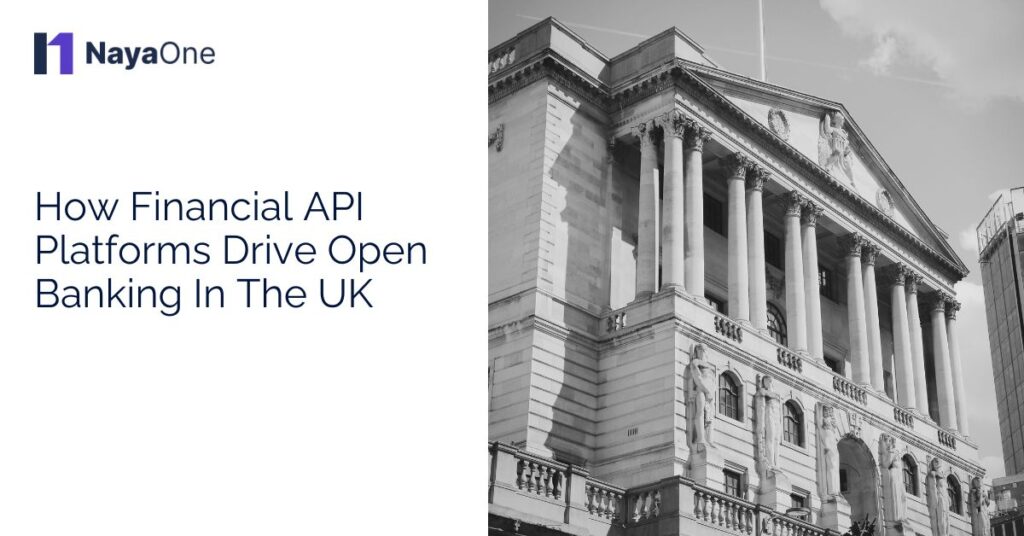Open banking is changing how banks and financial services work by allowing data to be shared safely with third-party providers. This opens the door to all sorts of new and exciting products for customers. However, making open banking work is not simple. It involves connecting different systems and sticking to a set of strict rules and regulations. This is where a financial API platform becomes a real game-changer. It acts as the middleman that helps data flow smoothly, safely, and quickly, making it easier for banks and fintech companies to adopt open banking.
Without such a solution, banks and fintechs would have to spend huge amounts of time and resources building direct connections between each other’s systems. Every integration would be a custom project, with lots of testing and troubleshooting. The platform removes this complexity by offering standardised connections that everyone can use. This accelerates the pace at which open banking projects can be launched and scaled, which benefits everyone, from large banks to emerging fintech startups, and most importantly, the customers.
How do these platforms simplify complex banking data sharing?
When you think about the number of different banking systems, apps, and technologies involved, it can get pretty complicated. Banks often use legacy systems that don’t easily talk to each other. Trying to build one-off connections between these systems and multiple fintech apps can be a nightmare. That’s where API-driven infrastructure comes into play — offering a single, consistent way to share data.
Instead of developers having to figure out each system’s quirks and build multiple separate connections, they use the platform’s standardised APIs. This means the data comes in the format they expect, the authentication is handled consistently, and errors are easier to manage. It’s a bit like having one universal adaptor instead of juggling dozens of plugs and sockets.
Imagine a bank that wants to offer its customers a new budgeting app created by a fintech company. Without this kind of solution, the bank’s IT team would need to create a direct link to that app’s system, and the fintech would have to do the same. Multiply that by dozens of apps and services, and the complexity quickly becomes overwhelming. The central platform cuts through this by acting as the universal adaptor, one integration point that works for all.
This simplicity helps speed up development and lowers the risk of costly errors, making open banking projects more manageable and quicker to launch. It also improves the reliability of the connections, reducing downtime or data mismatches, which are critical for user trust.
Why are they essential for compliance and security in open banking?
Open banking is heavily regulated, with frameworks like GDPR in Europe and PSD2 in the UK demanding strict security and privacy controls. Banks and fintechs must protect customer data while sharing it. This is where a dedicated financial API platform really shines. It has security features built right into its core.
For example, it uses secure authentication methods such as OAuth 2.0 to make sure only authorised parties get access. This means when a customer agrees to share their banking information with a third-party app, the system verifies that app’s identity and grants access without exposing sensitive login details. It also encrypts data both when it is stored and during transmission, so the information cannot be intercepted or tampered with.
Beyond that, it keeps detailed logs and audit trails, so any data access can be tracked and reviewed. This is vital for compliance reporting and quickly identifying any unusual or unauthorised activity. The platform’s architecture also allows for rapid updates to keep up with changing regulations and security threats, something banks would find much harder to manage individually.
This not only helps banks meet legal requirements but also builds trust with customers, who want to know their information is safe. Security breaches or privacy missteps can seriously damage a bank’s reputation, so embedding these protections into the platform is essential for sustainable open banking adoption.
How do these platforms foster collaboration between banks and fintechs?
One of the big advantages of this type of infrastructure is that it creates a common ground where banks and fintech companies can work together easily. Open banking’s potential relies on these partnerships. But testing new products and moving them into live use can take a long time if every integration has to be built from scratch.
Most platforms provide sandbox environments where developers can safely test their apps with dummy data. This allows fintechs to build and perfect their products without risking real customer data or disrupting live systems. Banks can also test how third-party apps will interact with their systems before approving access.
They also manage customer consent frameworks so users can control what data is shared and with whom. The system ensures that consent is collected, stored, and enforced in a way that meets regulatory standards. This helps banks avoid compliance risks and reassures customers that their privacy choices are respected.
Moving from the sandbox to production becomes a smoother process thanks to standardised APIs and secure data sharing. Because both banks and fintechs use the same protocols, there is less back-and-forth and fewer integration headaches. This encourages more financial institutions and tech partners to team up and bring innovative services to customers faster.
Ultimately, the platform becomes a vibrant ecosystem where many players can connect, innovate, and grow together, accelerating the overall adoption of open banking.
What business benefits do financial API platforms bring to banks adopting open banking?
The benefits go well beyond just technology. These platforms help banks cut costs by automating processes that used to be manual and time-consuming. For example, handling third-party integrations through a single solution means fewer headaches and less maintenance work. Banks don’t need large teams dedicated to maintaining dozens of unique connections.
There are also new revenue opportunities. By opening their data through APIs, banks can collaborate with fintechs to offer personalised financial services that attract and retain customers. These partnerships can lead to new products that bring in fees or commissions. For instance, a bank might team up with a robo-advisor fintech to offer automated investment advice directly through its app, creating a new income stream without building the technology from scratch.
Finally, customers benefit from a smoother experience. Instead of juggling multiple apps or waiting for slow processes, they get services that feel connected and responsive. For example, a customer could see their account balance, recent transactions, budgeting advice, and loan offers all in one place, seamlessly integrated. This improves satisfaction and loyalty, which is crucial in a competitive market where customers expect convenience and personalisation.
By investing in a financial API platform, banks position themselves not just as data providers but as active participants in a digital ecosystem that drives growth and customer engagement.
How will financial API platforms shape the future of open banking?
Financial API platforms are set to be the backbone of open banking’s future. They make it easier for banks and fintechs to innovate, adapt to new rules, and respond to changing customer expectations. As open banking evolves, these platforms will help financial institutions move from simply sharing data to creating truly connected financial and fintech ecosystems.
Looking ahead, their role will only grow as banks look to integrate more services, including payments, lending, wealth management, and insurance, all through APIs. Those institutions that adopt strong solutions will be able to move faster, reduce risk, and deliver the seamless, personalised services customers expect.
For any bank or fintech looking to get ahead, embracing a reliable financial API platform will be essential. It is no longer just about meeting regulatory requirements but about unlocking new possibilities for collaboration, innovation, and long-term growth within the broader fintech ecosystem.





